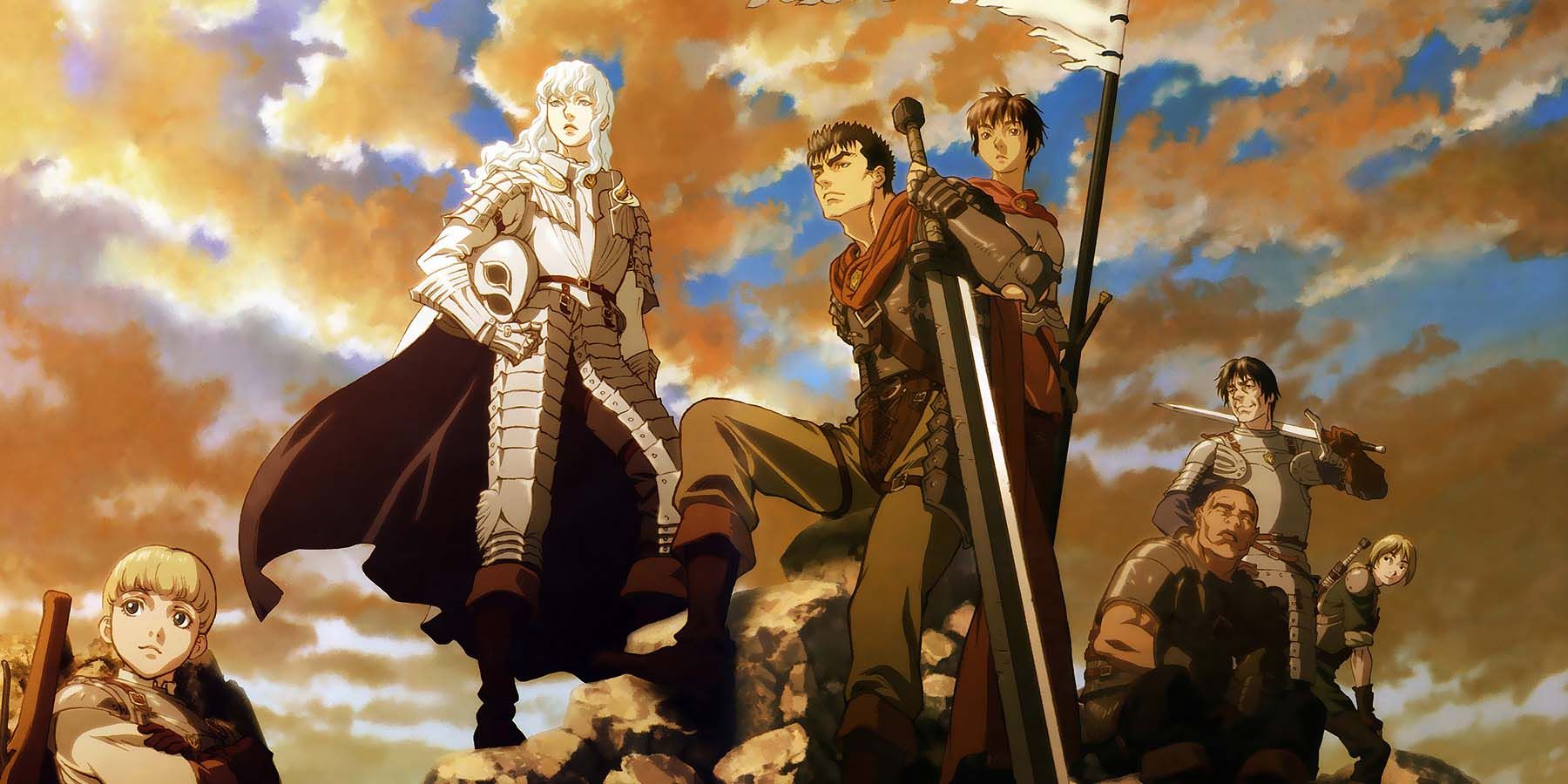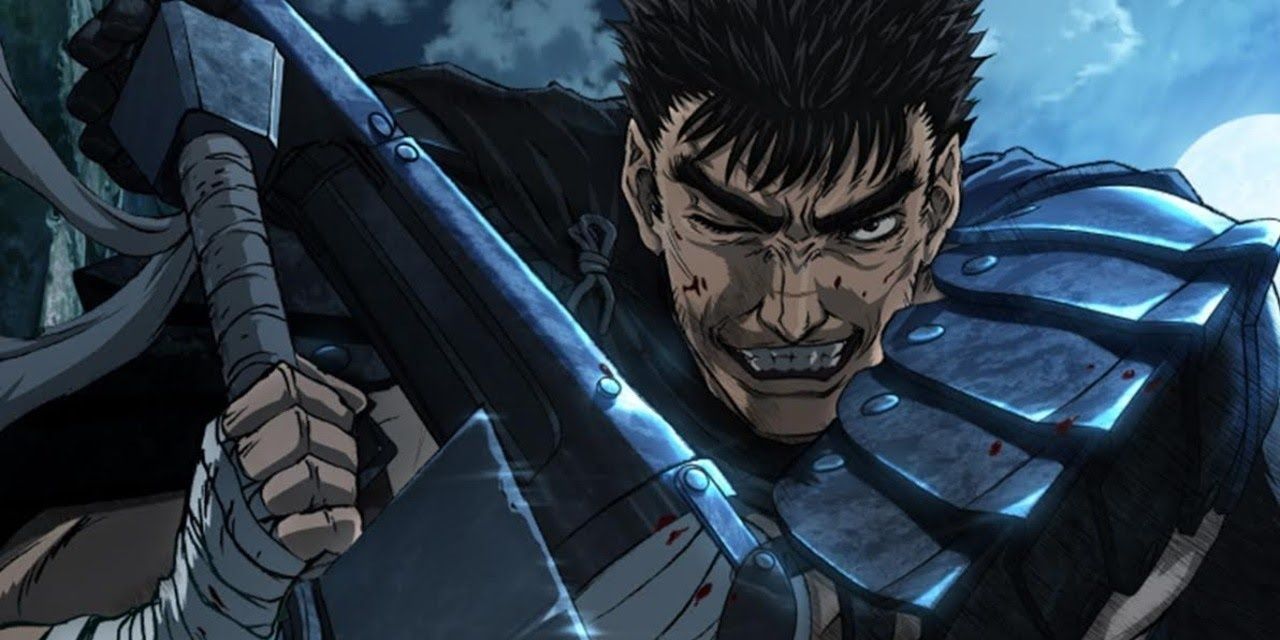Lauded for its immaculately detailed artwork, immersive world-building, complex character development, and raw visceral imagery, the late Kentaro Miura's Berserk is a title that has often been grouped among the greatest manga of all time. A fitting label for a story that has stirred hearts throughout its lengthy run — now entering the fourth decade of its serialization — Berserk has had a visible influence on other franchises in both in anime and manga itself, as well as titles in different mediums, including the iconic action role playing games Bloodborne and Dark Souls, developed by FromSoftware. In the years since its debut, the story has been adapted to the screen on multiple occasions, each with its own fair share of merits and demerits.
Viewed as a seminal title in the realm of dark fantasy manga as well as the seinen genre as a whole, Berserk follows the story of Guts, one of the medium's most loved protagonists. A lone swordsman facing a harsh and unforgiving world full of spirits, monsters, and otherworldly entities in a setting that bears similarities to medieval Europe, Guts' story is one of struggle — against both his inner demons and those he confronts in battle. Each successive adaptation of this grim, bloody tale has put forth its own interpretation of Berserk's intricately fleshed-out world, but with a degree of omission and condensation that has left fans divided on whether any of them truly do justice to the source material. As calls for a Netflix-sponsored take on the manga have mounted in recent years, the question of which adaptation has done it best so far does beg inquiry, so that any future ones can take notes and avoid repeating the shortcomings of past attempts.
Berserk (1997 TV Series)
As the first to see the light of day, the 1997 anime series, produced by Oriental Light and Magic under the stewardship of director Naohito Takahashi, has been acclaimed for several reasons, despite the animation having aged in the decades since its release. Running for 26 episodes that cover sections of the initial Black Swordsman arc from the manga as well as the entirety of the Golden Age arc, this retelling of Guts' story rarely strays from the source material, matching it quite well in tone, art style, and narrative continuity. Covering most important story arcs until the Eclipse, and even elevating certain moments, the show's entirely 2-D hand drawn frames retain an almost vintage charm, even when viewed today, and the animation is of a fairly high quality for its time, particularly during battles and action sequences, which accurately convey the nuance rendered by Miura's artwork.
This is exceptionally prominent in certain impact frames which echo the style of the manga. Grounded in a sense of gritty, pragmatic realism, this adaptation has most notably been commended for its captivating, atmospheric soundtrack by composer Susumu Hirasawa, which yielded the now iconic main theme associated with Guts. However, the biggest criticisms levied upon this take are almost always with respect to the censoring of the manga's gore and ultraviolent tendencies, as well as the exclusion of supernatural elements early on in the story — especially the introduction of the Skull Knight — which generates some narrative dissonance in the final episodes.
Berserk: The Golden Age Arc (2012-13)
This trilogy of films essentially retells the Golden Age Arc as shown in the 1997 series, but with updated artwork and animation that strives to heighten the experience. On this note, the quality of the animation, especially during battles and combat sequences is definitely praiseworthy, surpassing that of its predecessor. Fluid sword fights, horses galloping in full flight, and all the airborne severed appendages associated with the manga have been rendered in utmost detail, making this aspect of the experience truly enjoyable.
Even though this is to be expected in the case of a cinematic anime adaptation of a major title, Toshiyuki Kubooka's take on the story, which was produced by Studio 4°C, really have given their best in terms of the animation in multiple sequences. This version of the story also features the first uses of CGI in a Berserk adaptation, employing a hybrid style that does work reasonably well in context.
The censorship seen of the preceding adaptation is also absent, allowing this trilogy to bask in a tone that is fairly similar to the full glory of Berserk's manga. However, where this adaptation fails is in its compression of the overall narrative for the sake of runtime - as none the three films, Part I: The Egg of the King, Part II: The Battle for Doldrey, and Part III: The Advent, breach the two-hour mark.
This is important to note when considering how the source material extends for nearly the first 90 chapters of the manga. The omission of important plot threads for character development, or iconic scenes such as the Bonfire of Dreams sequence, in favor of unrelenting action does little to help this adaptation's case, as there is not much that will get new viewers invested in the supporting characters which negate the weight of the third film's climax.
Berserk (2016)
Needless to say, the latest anime adaptation of Berserk by Liden Films, GEMBA, and Milleensee is not without its adequate share of detractors. Having run for 24 episodes from 2016-17, this series positions itself as an informal continuation of the original 1997 series and the Golden Age film trilogy, adapting the Conviction and Falcon of the Millenium Empire arcs that subsequently take place in the manga. Although some aspects of the show's production overseen by director Shin Itagaki, such as its opening sequence, faithfulness to the manga's intensity, and coverage of major plot points are worthy of some commendation, the glaring issues with its art style and animation quality — mainly due to the exceedingly poor quality of the CGI used — have made this adaptation the target of an almost never-ending stream of criticism.
In fact, the shift from a medium blending 2-D and 3-D to one primarily centred on the latter technique was quite unsuccessful in its rendering of many beloved characters, producing badly detailed models that do not blend into the environments they were placed in. The use of rendering techniques that attempted to emulate Miura's art style also produced results that were woeful to say the least and certain elements of the sound design, with special note given to the sounds made by Guts swinging his emblematic oversized sword dubbed the Dragonslayer, were ungainly and off-putting, inadvertently turning serious, high stakes moments into comic relief. Moreover, the truncation of story arcs, retcon of important plot points, uneven tone, and deep dive into the uncanny valley of lifeless puppet-like character models has firmly placed this adaptation as one with more cons that pros.
Although the jury may still be out on which version of Berserk comes closest to honoring the exceedingly high standards set by its source material, it is safe to say that most will find the original 1997 TV series a worthy introduction to the franchise as a whole. Even in spite of its faults and older animation style, the show's narrative and emotional core do a fairly good job of enhancing the parts of the story that matter most, providing new fans with a flawed yet honest introduction into the vibrant yet grim world that Kentaro Miura has created. As the manga continues its serialization, helmed by Kouji Mori and Miura's former assistants at Studio Gaga, there may still yet be time for a version of Berserk that could give fans what they have been demanding for nigh on three decades now.

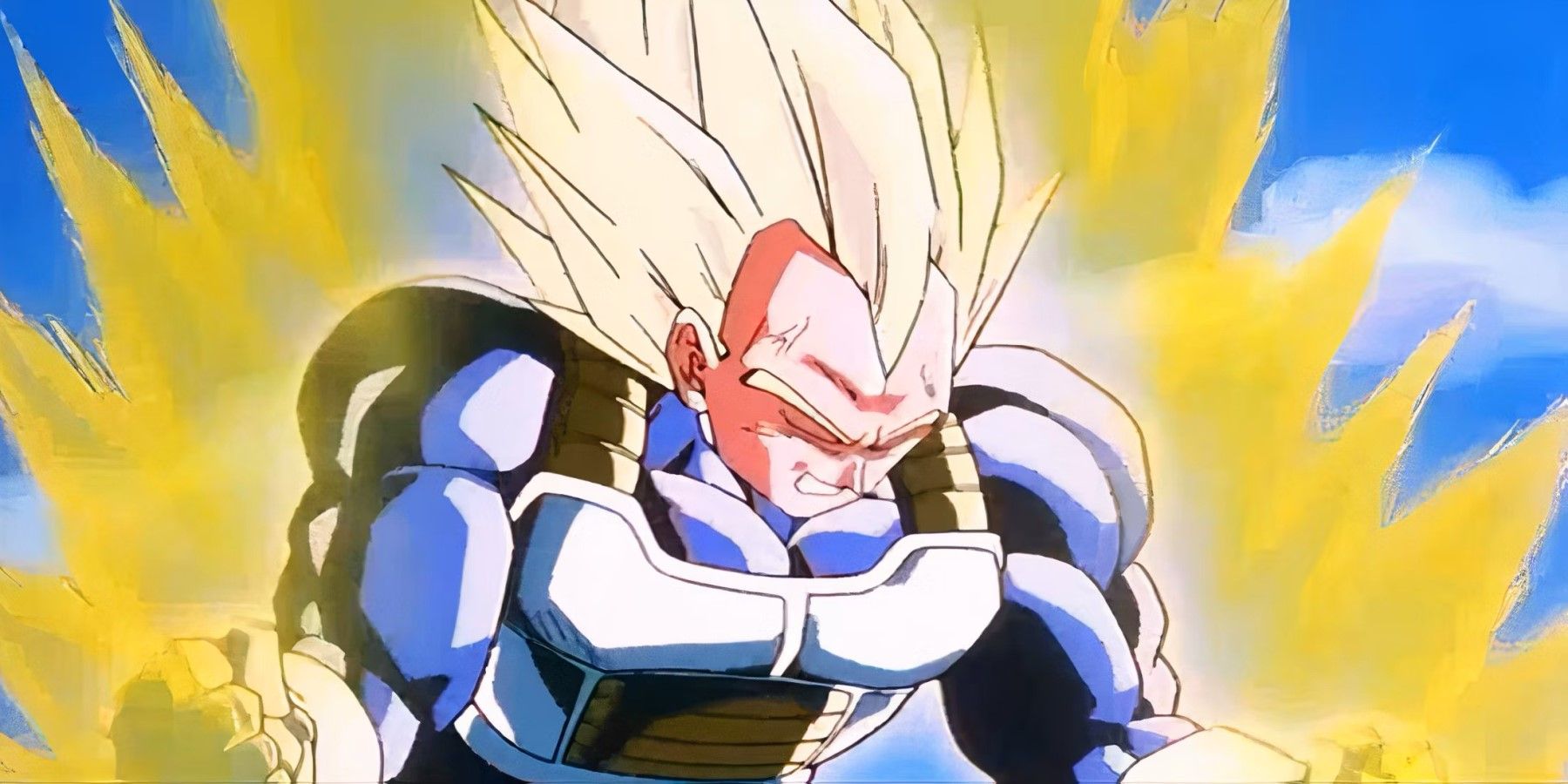
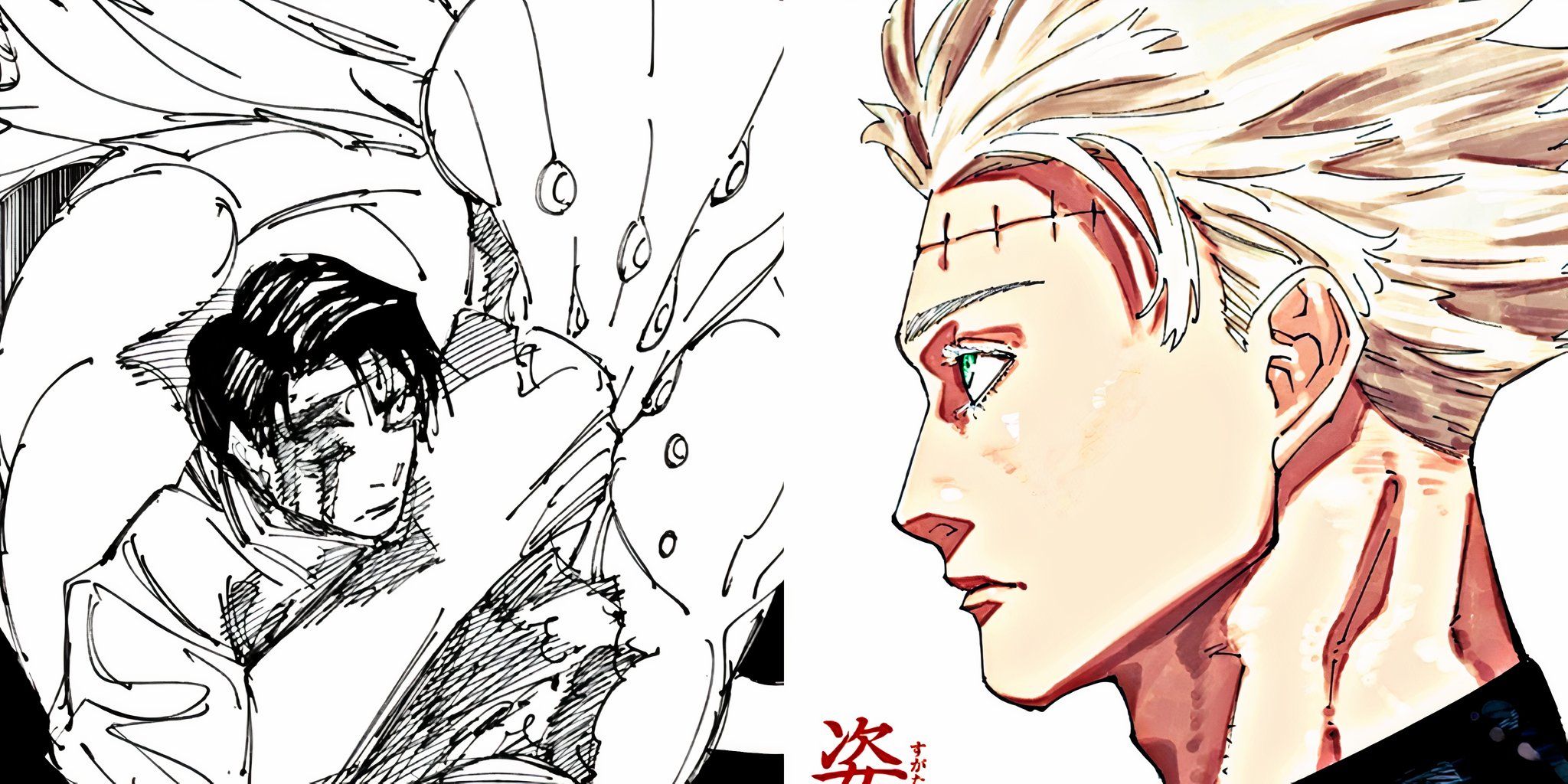
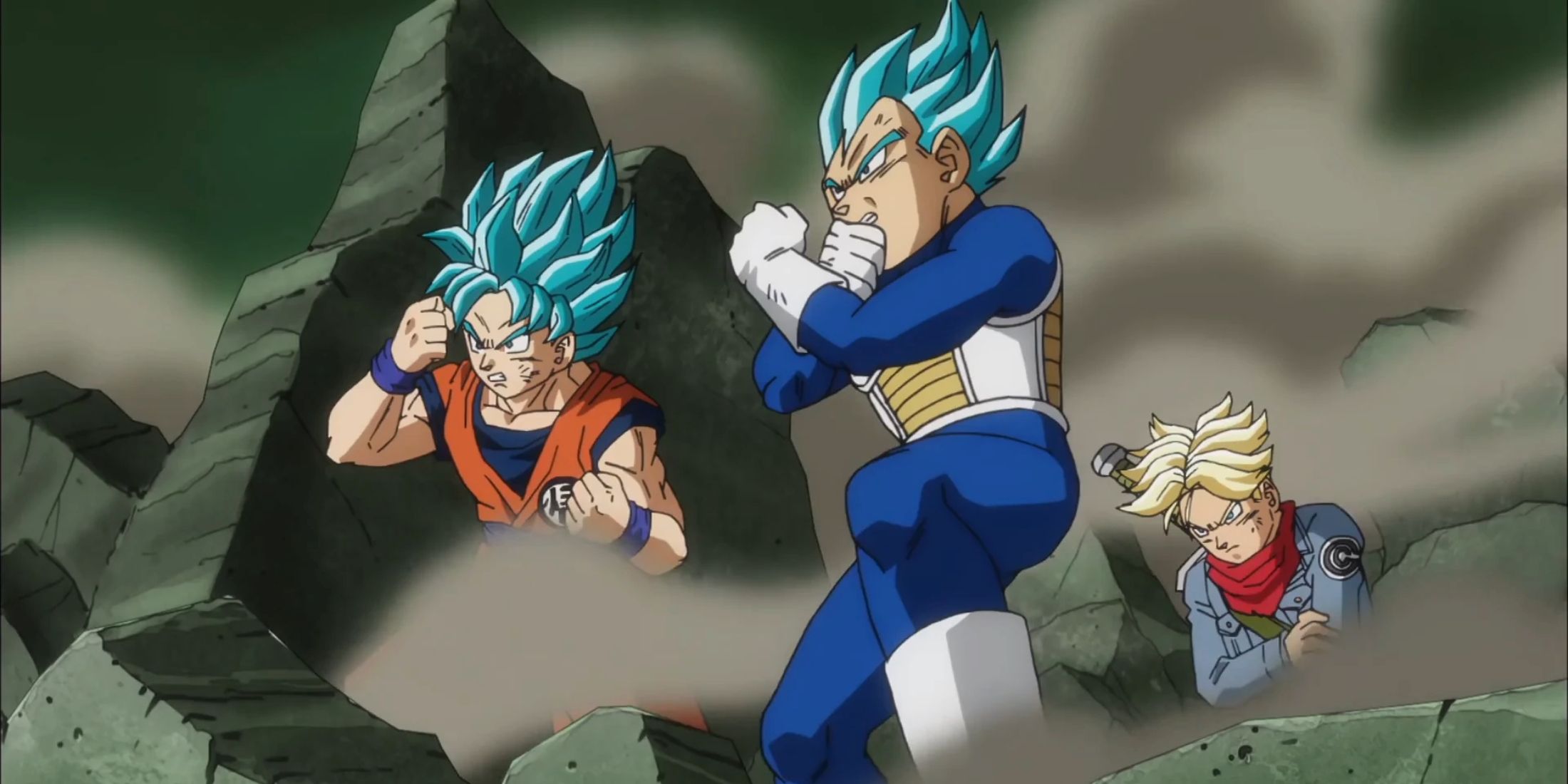
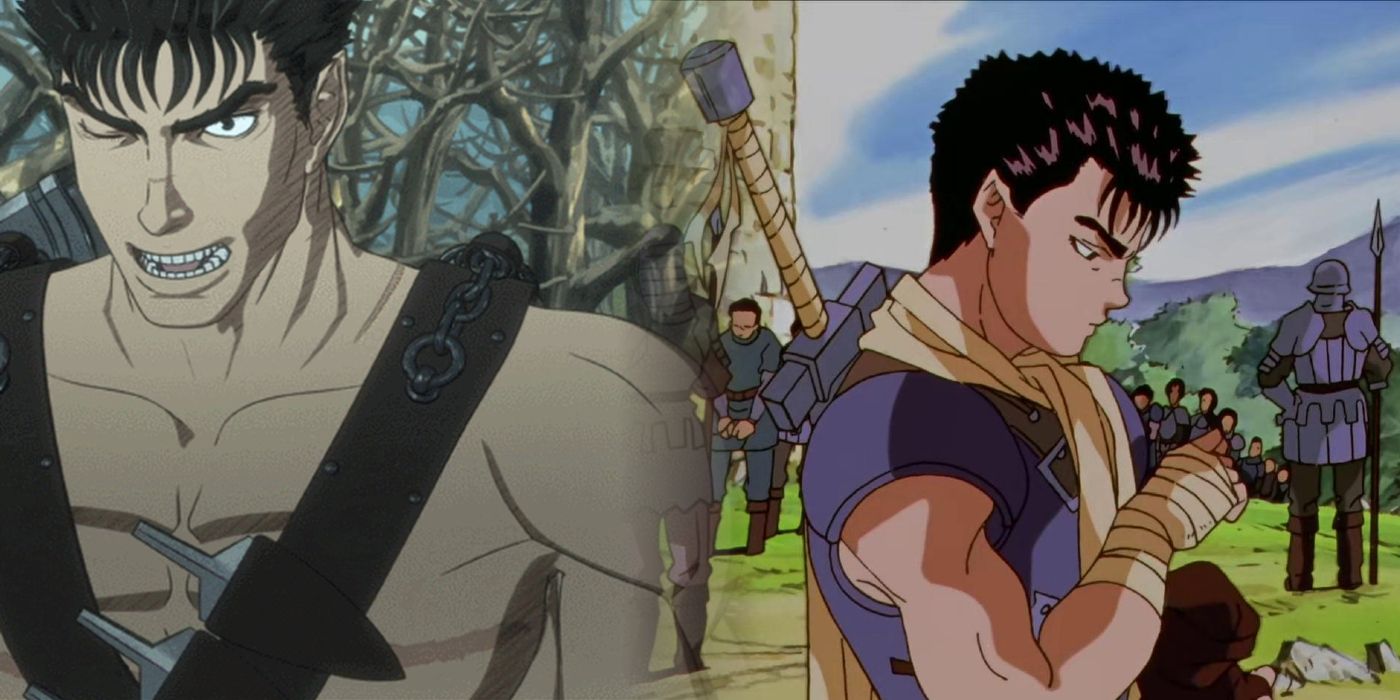
-Cropped.jpg)
